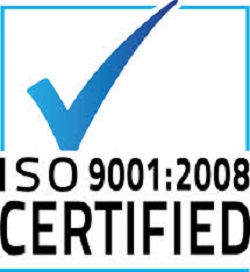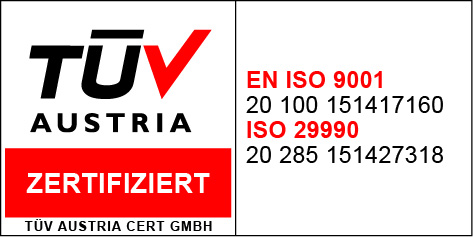


Don’t use a credit card unless your debt is at a manageable level and you know you’ll have the money to pay the bill when it arrives.
It’s easy to forget how much you’ve charged on your credit card. Every time you use a credit card, write down how much you have spent and figure out how much you’ll have to pay that month. If you know you won’t be able to pay your balance in full, try to figure out how much you can pay each month and how long it’ll take to pay the balance in full.
If you’ve got unpaid balances on several credit cards, you should first pay down the card that charges the highest rate. Pay as much as you can toward that debt each month until your balance is once again zero, while still paying the minimum on your other cards. The same advice goes for any other high interest debt (about 8% or above) which does not offer the tax advantages of, for example, a mortgage.
Risk Tolerance
You are approaching the half-way point in your journey to saving and investing. This is a good point to make sure that you understand some key concepts: SavingsYour "savings" are usually put into the safest places or products that allow you access to your money at any time. Examples include savings accounts, checking accounts, and certificates of deposit. At some banks and savings and loan associations your deposits may be insured by the Federal Deposit Insurance Corporation (FDIC). But there's a tradeoff for security and ready availability. Your money is paid a low wage as it works for you.
Most smart investors put enough money in a savings product to cover an emergency, like sudden unemployment. Some make sure they have up to 6 months of their income in savings so that they know it will absolutely be there for them when they need it. But how "safe" is a savings account if you leave all your money there for a long time, and the interest it earns doesn't keep up with inflation? Let’s say you save a dollar when it can buy a loaf of bread. But years later when you withdraw that dollar plus the interest you earned, it might only be able to buy half a loaf. That is why many people put some of their money in savings, but look to investing so they can earn more over long periods of time, say three years or longer. InvestingWhen you "invest," you have a greater chance of losing your money than when you "save." Unlike FDIC-insured deposits, the money you invest in securities, mutual funds, and other similar investments are not federally insured. You could lose your "principal," which is the amount you've invested. That’s true even if you purchase your investments through a bank. But when you invest, you also have the opportunity to earn more money than when you save. But what about risk? All investments involve taking on risk. It’s important that you go into any investment in stocks, bonds or mutual funds with a full understanding that you could lose some or all of your money in any one investment. While over the long term the stock market has historically provided around 10% annual returns (closer to 6% or 7% “real” returns when you subtract for the effects of inflation), the long term does sometimes take a rather long, long time to play out. Those who invested all of their money in the stock market at its peak in 1929 (before the stock market crash) would wait over 20 years to see the stock market return to the same level. However, those that kept adding money to the market throughout that time would have done very well for themselves, as the lower cost of stocks in the 1930s made for some hefty gains for those who bought and held over the course of the next twenty years or more.
DiversificationIt is true that the greater the risk, the greater the potential rewards in investing, but taking on unnecessary risk is often avoidable. Investors best protect themselves against risk by spreading their money among various investments, hoping that if one investment loses money, the other investments will more than make up for those losses. This strategy, called “diversification,” can be neatly summed up as, “Don’t put all your eggs in one basket.” Investors also protect themselves from the risk of investing all their money at the wrong time (think 1929) by following a consistent pattern of adding new money to their investments over long periods of time.
|
Join our Linkedin Group
The GAFM ® Board is the 1st Graduate Certification Body to Become Accredited and Certified for: ISO 9001 Quality and ISO 29990 Training in the World. GAFM ® owns the former AAFM ® Certifications and Programs
|

Home Certifications Board Recognition Requirements Providers About Contact Us Contact Apply AFAPPC GetCertifiedPPC Benefits Chartered Wealth Manager News How To Use Stock Markets Training Calendar FINRA Application Reg. Payments About Old Events CWM Training Program News UBT University Business Technology Saudi Arabia Saudi Arabia - Certification Training Programs 2017 - University Business & Technology In House Training Speakers CEO Message Chartered Certified Economist Certified Financial Analyst FINRA SEC Chartered Wealth Manager Training Verify Member Indonesia Malaysia Guides Informa GAFM Guides Jamaica Qualifying Degrees Global Advisors Membership Mission Ethics Governmental Recognition Links Handbook mfm Financial Planner Program Chartered Economist CCO Higher Institute IP List Become Provider Management Consulting Jobs AAPM TUV Accreditation CWM Chartered Wealth Manager Terms Approved Fin Analyst Degrees Copy of Certification Economics Certification Economics Degrees Management Degrees Finance Degrees Accounting Degrees Exams Renew Certification Continuing Ed Awards Sample Accreditations Honor Society Trademarks Careers Government Jobs Complaint Site Map Mentz George Mentz Lawyer Mentz George Colorado USA Speaker Consultant AFA ® Accredited Financial Analyst Certification CTEP ® Trust and Estate Certification CIPM ® Certified International Project Manager CWM ® Chartered Wealth Manager ® AMA ® Management Accountant Certification AMC ® Management Consulting Certification MMC ® Management Consulting Certification Book







